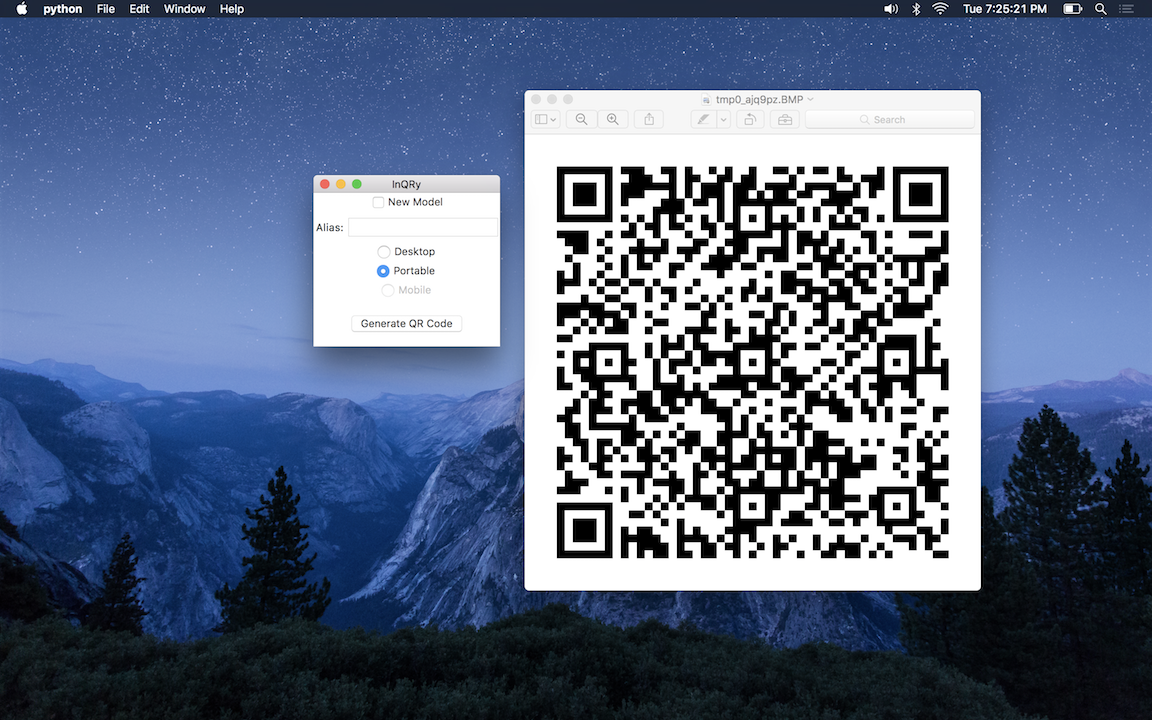|
|
||
|---|---|---|
| .idea | ||
| docs | ||
| icon | ||
| inqry | ||
| tests | ||
| .gitignore | ||
| Info.plist | ||
| LICENSE.md | ||
| README.md | ||
| conftest.py | ||
| pytest.ini | ||
| setup.py | ||
README.md
InQRy
A robust, cross-platform utility that generates a QR code containing hardware specs of the target machine or device.
- About
- Requirements
- Supported platforms
- Install and run
- Build
- How it works
- Usage
- Screenshot
- Limitations
- Issue submission
Requirements
- Python 3.4 and later
Supported platforms
- OS X 10.10 and later
- Windows 10
- Windows Server 2012 R2 and later
About
Written in pure Python, InQRy is designed to obtain asset information both quickly and accurately, without having to rely on data imports or asset-owner participation during physical inventory. The QR code contains detailed information about the client machine or device, which can then be scanned to quickly add the asset into a web-based inventory system, such as Snipe-IT.
Though originally designed to work on only laptop and desktop computers, it is now capable of
obtaining the hardware specs of any number of attached iOS devices, pending that Apple's command-line utility
cfgutil is installed via
Apple Configurator 2.
Install and run
pip3 install inqry
python3 -m inqry
Build on macOS
Requirements
- py2app 0.12 and later
Instructions
Run the following command to build the InQRy app. The output will be under dist/
python3 setup.py py2app --iconfile icon/Icon.icns
Build on Windows
Requirements
- pyinstaller 3.2.1 and later
Instructions
Run the following command to build the InQRy app. The output will be under dist/
pyinstaller --onefile --icon icon/Icon.ico inqry/__main__.py
How it works
InQRy obtains hardware specs using platform-specific shell commands and Python modules. Data is parsed and given to SystemSpecs object, where it is homogenized and passed to the FormInstructions class, where even more data
is added and manipulated to work with the Snipe-IT inventory system. Instructions
containing that data are used to create a python-qrcode-generated code,
which is displayed on the screen for scanning.
InQRy determines which instructions to follow based on a combination of user input and the machine itself. Those instructions contain other important information that allow it to move fluidly through different types of fields in the Snipe-IT asset entry form.
Usage
Example usage of an InQRy SystemSpecs object:
>>> from inqry.system_specs import systemspecs
>>> ss = systemspecs.SystemSpecs()
>>> ss.os_type
'Darwin'
>>> ss.memory
'8 GB'
>>> ss.storage
{'Drive 1': '251.0 GB SSD (APPLE SSD AP0256J)'}
Screenshot
Limitations
-
The CR1400 series QR code reader is required to use the QR code with an entry form. See the barcode scanner README for more information.
-
The
FormInstructionsclass is written to support our own custom fields and fieldsets for Snipe-IT. You may need to modify theFormInstructionsclass in order to use this in your environment. However, most of its attributes should be compatible with similar asset-entry forms. -
Obtaining mobile device hardware specs is limited to iOS devices, and contingent upon having installed
cfgutilvia Apple Configurator 2.
Issues
- Create a GitHub Issue
- apxlab@microsoft.com
Microsoft Internal Only
- Submit a bug on our VSTS board: aka.ms/apexlabsr
